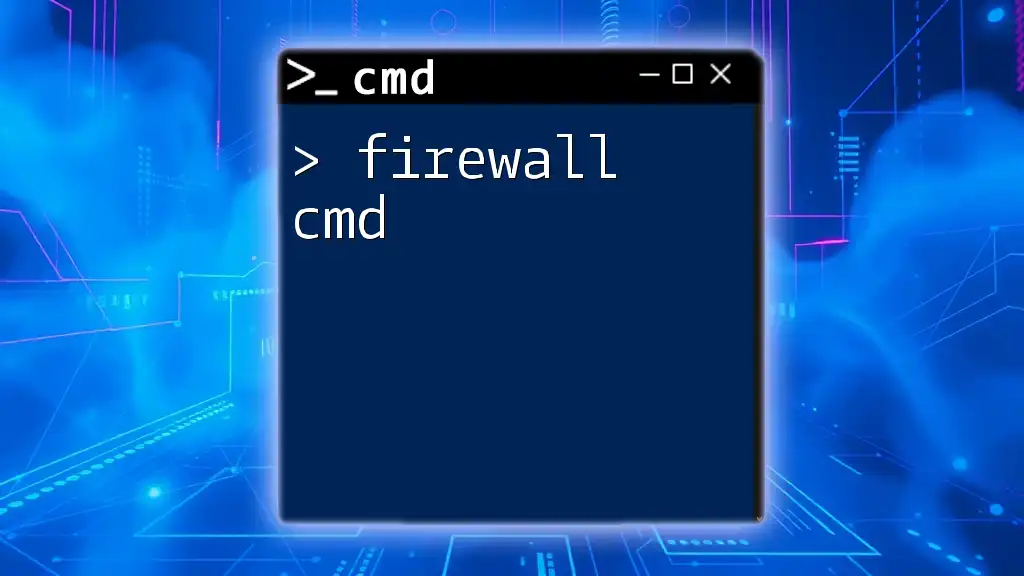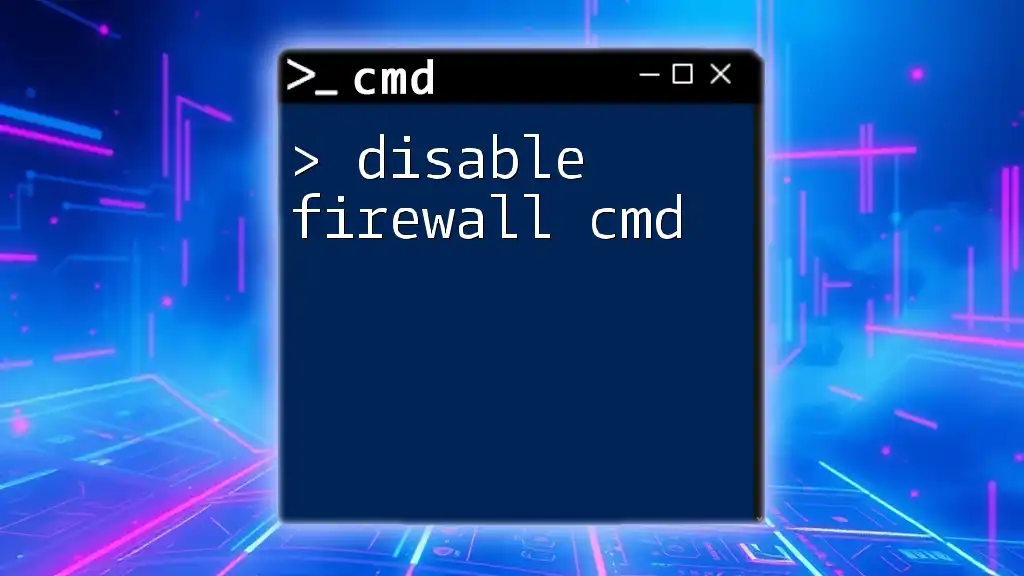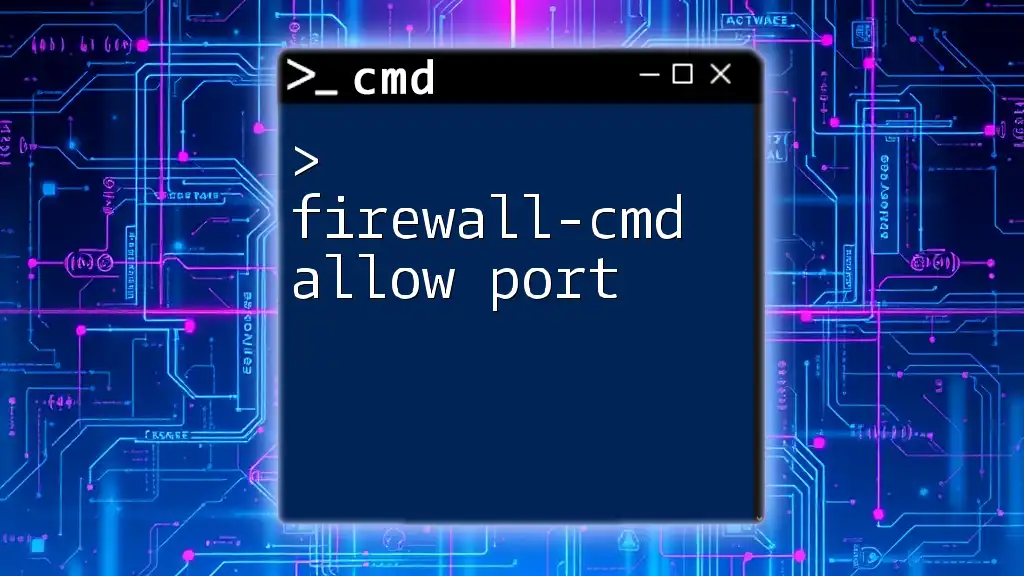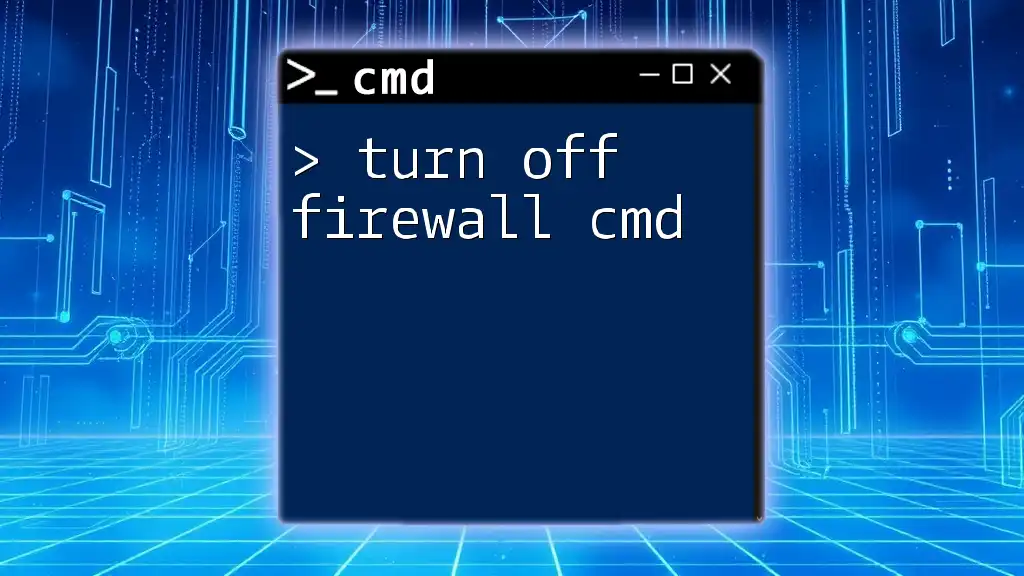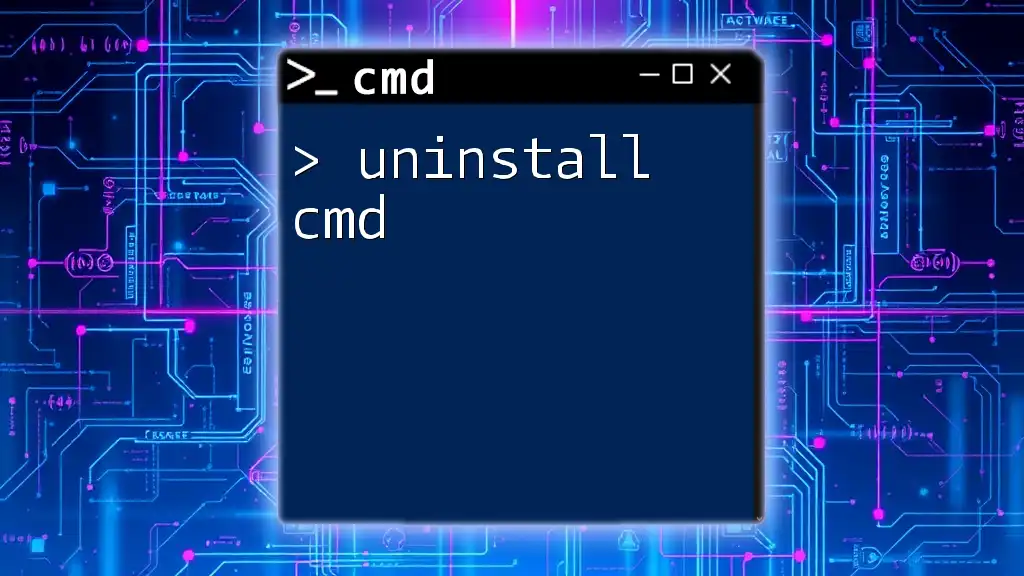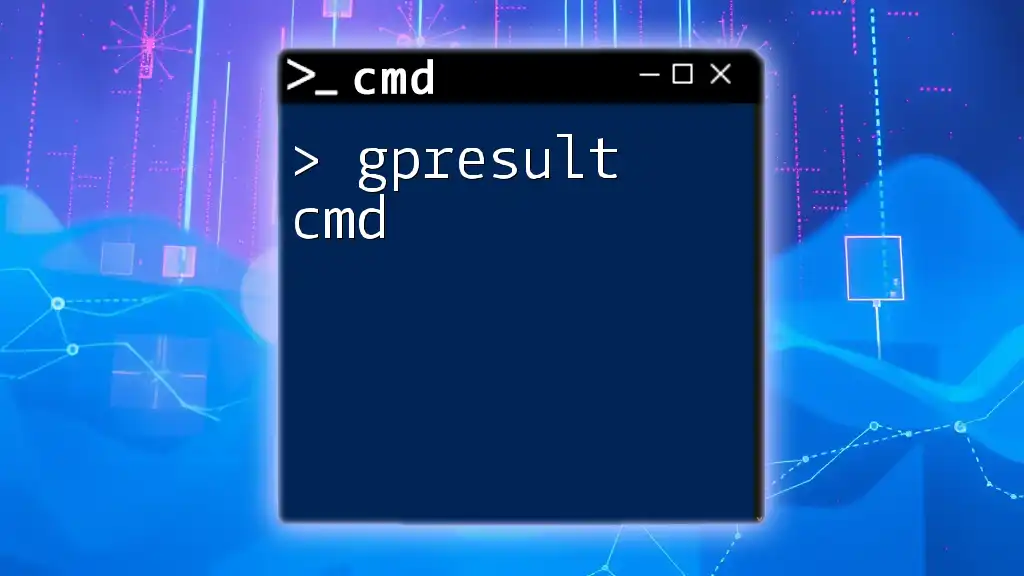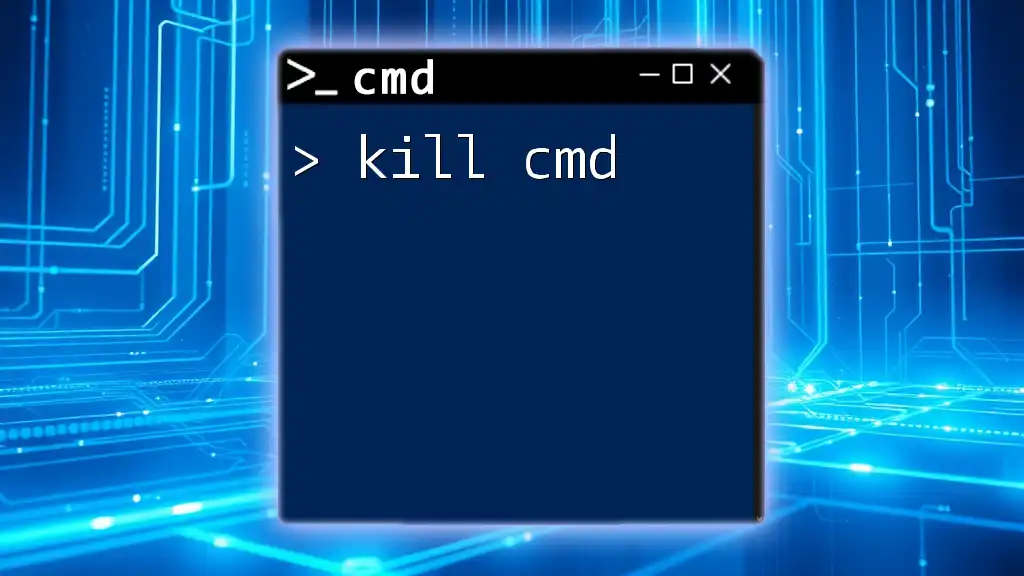The "firewall cmd" refers to using Command Prompt commands to manage and configure the Windows Firewall settings, enabling users to control network traffic and enhance security.
Here’s an example command to allow a specific program through the Windows Firewall:
netsh advfirewall firewall add rule name="Allow MyApp" dir=in action=allow program="C:\Path\To\MyApp.exe" enable=yes
Understanding Firewalls and `firewall-cmd`
What is a Firewall?
A firewall is a network security device that monitors and controls incoming and outgoing network traffic based on predetermined security rules. Its primary purpose is to establish a barrier between a trusted internal network and untrusted external networks, such as the internet. Firewalls are crucial for protecting sensitive data and systems from unauthorized access and cyber threats.
Introducing `firewall-cmd`
`firewall-cmd` is a command-line interface tool for managing the firewall configuration in Linux systems, specifically with Firewalld. It provides a dynamic way to manage firewall rules without requiring a complete restart of the firewall service. Compared to static firewall management tools, `firewall-cmd` offers greater flexibility, allowing administrators to apply changes on-the-fly.
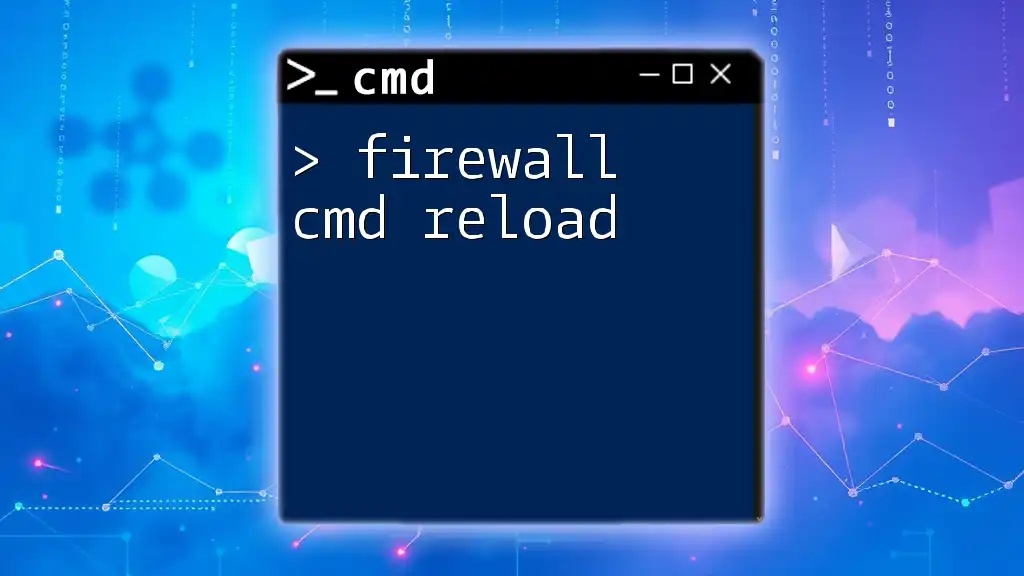
Installing `firewall-cmd`
Prerequisites
Before installing `firewall-cmd`, ensure you are using a Linux distribution that supports it, such as CentOS, Fedora, or RHEL. It’s recommended that your system is up to date with the latest packages and security updates for optimal performance.
Installation Steps
To install `firewall-cmd`, you can use the package management tool for your distribution. For example, on CentOS or RHEL, you can install it using the following command:
sudo yum install firewalld
On Fedora, the command would be:
sudo dnf install firewalld
Once installed, verify that `firewalld` is running by executing:
sudo systemctl status firewalld
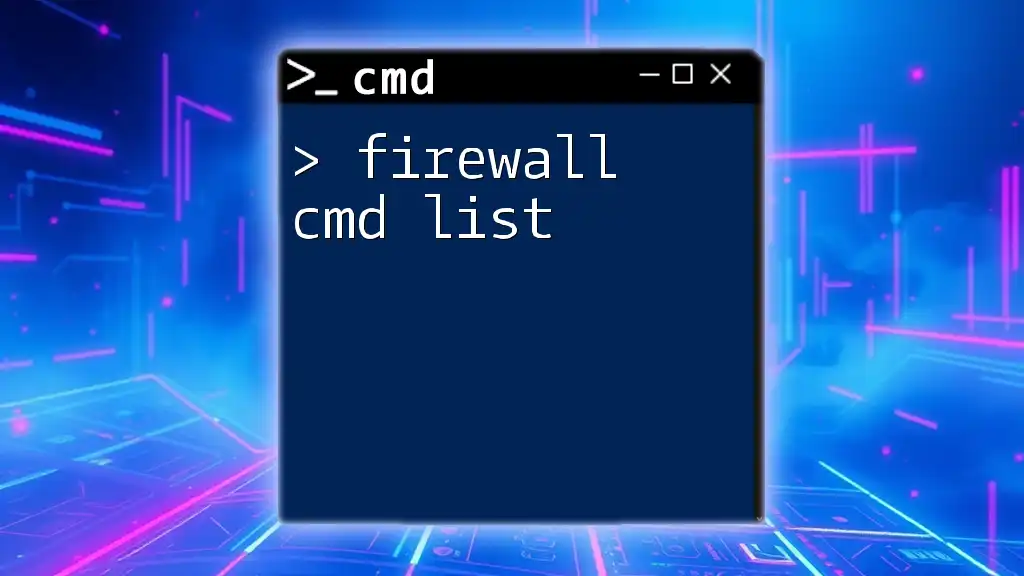
Basic Concepts of `firewall-cmd`
Zones and their Roles
In Firewalld, zones represent different trust levels. Each zone has a specific set of rules that applies to the network traffic flowing through it. Common zones include:
- Trusted: All network connections are accepted.
- Public: Connections are restricted; ideal for public Wi-Fi.
- Home: Allows more trusted connections within a home network.
Understanding how to assign and manage these zones in `firewall-cmd` is essential for creating an effective firewall strategy.
Services and Ports
In firewall management, services define network services that can be allowed through the firewall, while ports refer to network ports used by these services. `firewall-cmd` simplifies the management of these elements by allowing you to add or remove services easily, rather than specifying port numbers manually.

Working with `firewall-cmd`
Starting and Stopping the Firewall
To start or stop the firewall, you need administrative privileges. Use the following commands:
sudo systemctl start firewalld
sudo systemctl stop firewalld
You can check the status of the firewall by running:
sudo systemctl status firewalld
Viewing Current Configuration
Listing Active Zones
To see which zones are active and their configurations, you can use:
firewall-cmd --get-active-zones
This command will list all the zones currently in use, providing a clear picture of your firewall's operational state.
Displaying Rules
To display the current rules for a specific zone, use:
firewall-cmd --zone=public --list-all
This command gives you detailed information on the configurations applied to the public zone, such as allowed services and ports.
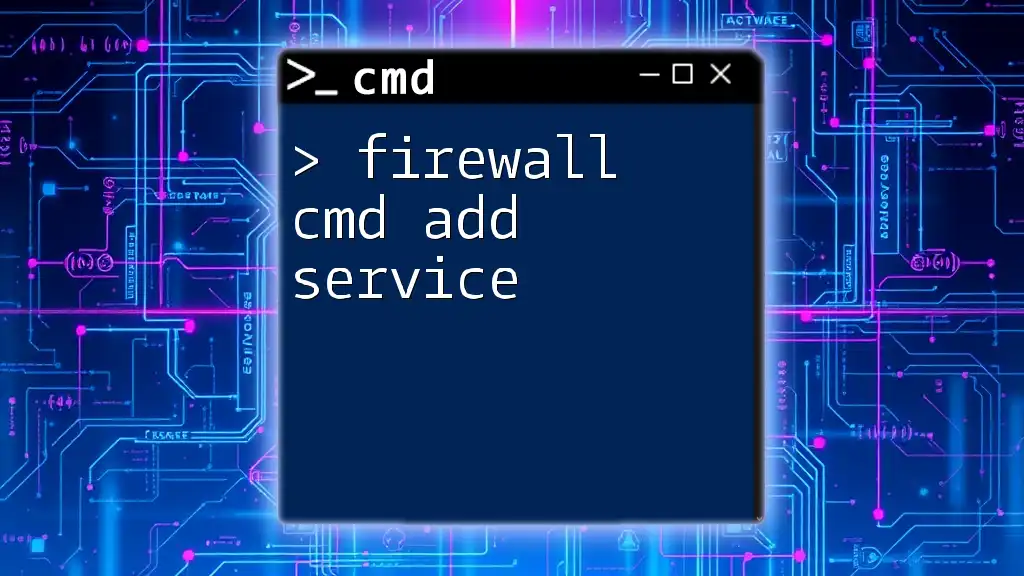
Configuring `firewall-cmd`
Adding and Removing Services
To allow a specific service through the firewall, use the following command, replacing http with the desired service:
firewall-cmd --zone=public --add-service=http --permanent
To remove a service, you can use:
firewall-cmd --zone=public --remove-service=http --permanent
Remember to reload the firewall to apply the changes:
firewall-cmd --reload
Opening and Closing Ports
Opening a Single Port
To open a specific TCP port, use the command:
firewall-cmd --zone=public --add-port=8080/tcp --permanent
Closing a Single Port
To close a port that you have previously opened, use:
firewall-cmd --zone=public --remove-port=8080/tcp --permanent

Advanced Features of `firewall-cmd`
Persistent vs Non-Persistent Configurations
When you apply changes with `firewall-cmd`, they can be either persistent or temporary. Using the `--permanent` flag will ensure that your changes survive a firewall service restart. Without it, the changes are temporary and will be lost after a reboot or service restart.
Working with Direct Rules
Direct rules offer another level of control, allowing you to bypass the standard rules and apply custom rules directly to the Netfilter. Here is how you can add a direct rule:
firewall-cmd --direct --add-rule ipv4 filter INPUT 0 -m state --state RELATED,ESTABLISHED -j ACCEPT
This command allows established connections, which can be useful for certain advanced configurations.
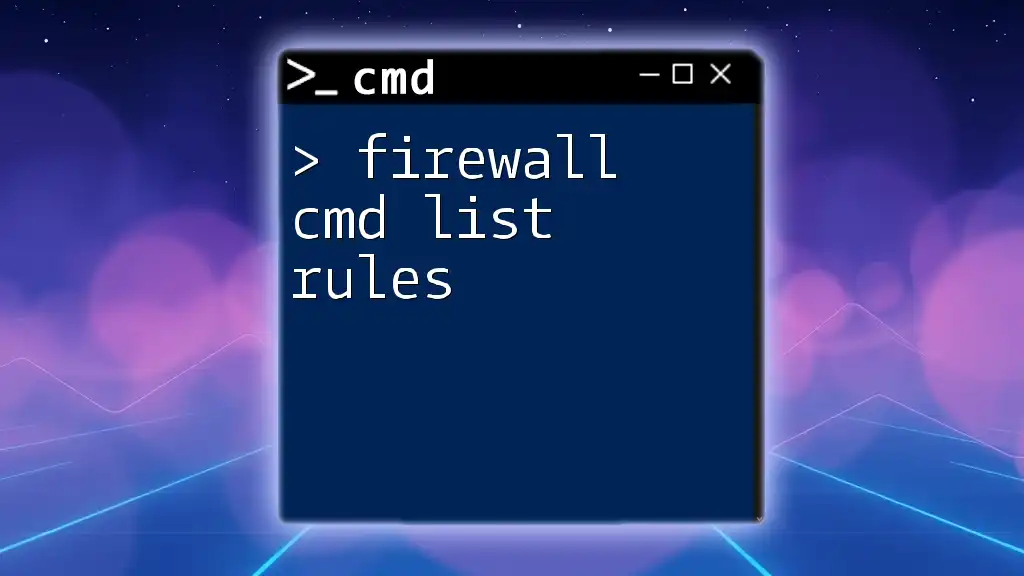
Troubleshooting `firewall-cmd`
Common Issues and Solutions
When working with `firewall-cmd`, you may encounter issues such as services not being accessible despite being allowed through the firewall. To troubleshoot, you can check the logs for any entries that indicate blocked traffic.
To enable logging, you can configure specific logging rules to monitor and analyze firewall activity. This can help you identify misconfigurations or unauthorized access attempts.
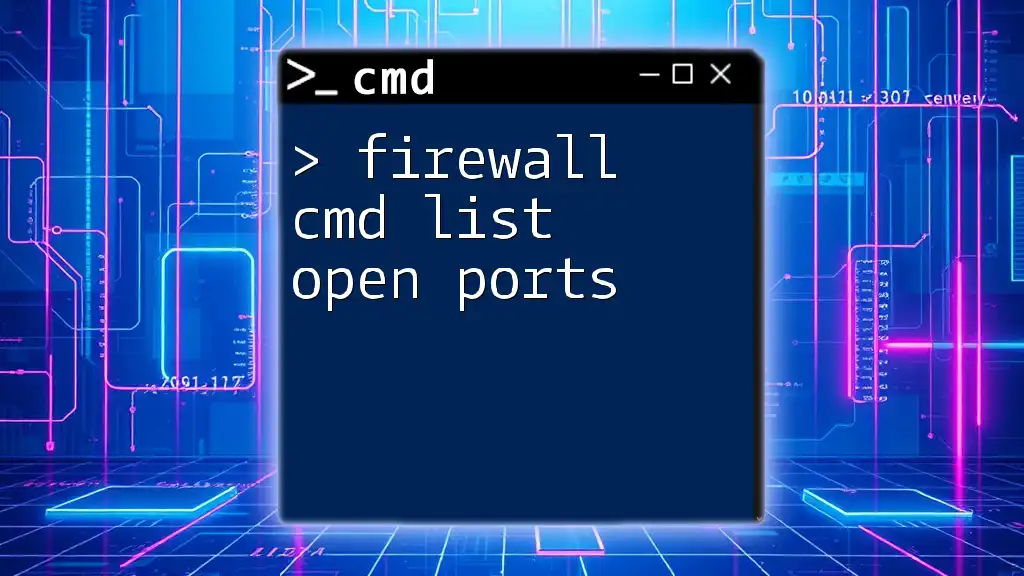
Conclusion
Having a robust understanding of `firewall-cmd` can significantly enhance your network security. By mastering the commands and configurations discussed in this article, you’ll position yourself to effectively manage and protect your Linux environments.

Additional Resources
For further learning, consider exploring the official documentation for Firewalld and active community forums dedicated to Linux and network security. Engaging with these resources can deepen your understanding and help solve specific queries you might encounter in your journey with `firewall-cmd`.

